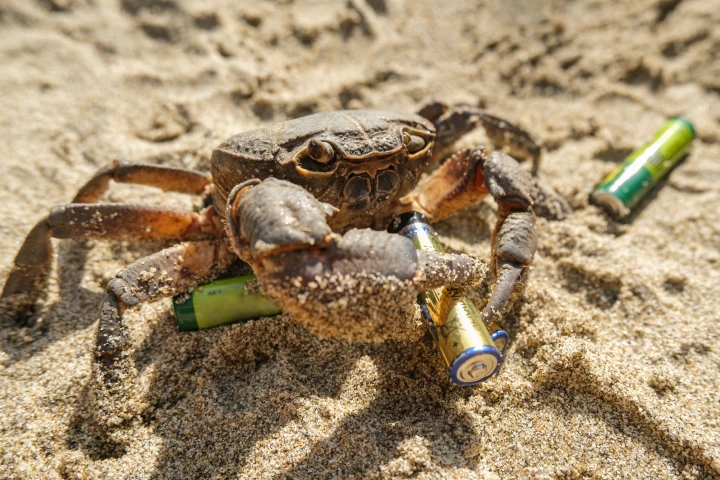Crabs
-
Chitin, which provides crucial exoskeletal structure and protection to soft-bodied arthropods such as crustaceans, spiders and insects, may have a surprising role in switching up human metabolism in the gut, helping to fight weight gain and obesity.
-
That plate of smashed crab legs about to be cleared from the dining table and tossed in the trash might actually be the future of rechargeable batteries. A new discovery for its use in sodium-ion technology has researchers certainly believing so.
-
Researchers at Northwestern University in Illinois have demonstrated the world's smallest remote-controlled walking robot. These tiny machines can bend, twist, crawl, walk, turn and jump without hydraulics or electricity, using shape-memory alloys.
-
When hospitals are checking medical devices for sepsis, they utilize a chemical derived from horseshoe crab blood. A new system is promised to deliver a more sustainable supply of that blood, which could even be used to check human blood for sepsis.
-
An international team of scientists has discovered a 95 million year-old "platypus crab" that may throw into question how you define a crab. Dating back to the mid-Cretaceous period, the tiny swimming crab shows larval features that produce new insights on evolution.
-
New animal species are constantly turning up in the deep oceans, thick jungles, or even dusty museum store rooms. Here’s our favorite new additions to the Tree of Life in 2017, as well as a couple of “Lazarus” creatures that were believed extinct but rediscovered this year.
-
Supreme fitness is a trait males of many species might like to show off when searching for a mate. The fiddler crab, new research shows, attracts females by waving a brightly colored claw and then drumming it on the ground, a behavior that also seems to indicate the size of its home.






